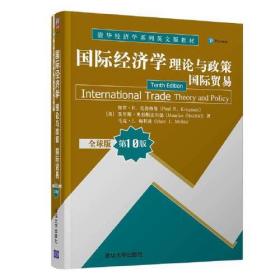
国际经济学:理论与政策(国际贸易) (全球版 第10版)
买书,就上二手书海官方企业店,清仓处理,真实库存,特价旧书,收藏店铺,优先发货! ps:下午三点之前的订单当天发货,之后明天发货,特殊情况除外。
¥ 14.98 2.5折 ¥ 59 八五品
库存156件
河南鹤壁
认证卖家担保交易快速发货售后保障
作者[美]保罗·R. 克鲁格曼;莫里斯·奥伯斯法尔德(Maurice Obstfeld);马克·J. 梅利兹(Marc J. Melitz)
出版社清华大学出版社
出版时间2021-03
版次1
装帧其他
货号wk-729233
上书时间2024-11-01
- 在售商品 暂无
- 平均发货时间 11小时
- 好评率 暂无
- 最新上架
商品详情
- 品相描述:八五品
- 正版二手,几十万种图书无法都提供实拍图,但均为7-9成新,无缺页、会有瑕疵或者少许磨损 、或多或少都会有划线、笔记、涂写等,不影响使用。均不保证有光盘、卡片等,辅导习题类笔记较多;书籍有多封面的新老封面随机发货,内容一致,不影响使用,介意勿拍!图片孔网自动匹配,图片与标题不符时以及图片为套装,与标题不符时的下单前请咨询客服,望周知!
图书标准信息
- 作者 [美]保罗·R. 克鲁格曼;莫里斯·奥伯斯法尔德(Maurice Obstfeld);马克·J. 梅利兹(Marc J. Melitz)
- 出版社 清华大学出版社
- 出版时间 2021-03
- 版次 1
- ISBN 9787302573401
- 定价 59.00元
- 装帧 其他
- 开本 16开
- 纸张 胶版纸
- 页数 326页
- 【内容简介】
- 第1 章 绪论 第1 部分 国际贸易理论 第2 章 世界贸易:概览 第3 章 劳动生产率和比较优势:李嘉图模型 第4 章 特定要素和收入分配 第5 章 资源与贸易:赫克歇尔-俄林模型 第6 章 标准贸易模型 第7 章 外部规模经济和 第8 章 全球经济中的公司:出口决策、外包和跨国企业 第2部分 国际贸易政策 第9 章 贸易政策工具
- 【作者简介】
-
:
普林斯顿大学教授,2008年诺贝尔经济学奖获得者,目前还担任许多国家和地区的经济政策咨询顾问。他的主要研究领域包括国际贸易、国际金融、货币危机与汇率变化理论,被誉为当今世界上最令人瞩目的贸易理论家之一。
- 【目录】
-
Introduction 1
What Is International Economics About? 3
The Gains from Trade 4
The Pattern of Trade 5
How Much Trade? 5
Balance of Payments 6
Exchange Rate Determination 6
International Policy Coordination 7
The International Capital Market 8
International Economics: Trade and Money 8
Part 1 International trade theory 10
World Trade: An Overview 10
Who Trades with Whom? 10
Size Matters: The Gravity Model 11
Using the Gravity Model: Looking for Anomalies 13
Impediments to Trade: Distance, Barriers, and Borders 14
The Changing Pattern of World Trade 16
Has the World Gotten Smaller? 16
What Do We Trade? 18
Service Offshoring 19
Do Old Rules Still Apply? 21
Summary 22
Labor Productivity and Comparative Advantage:
The Ricardian Model 24
The Concept of Comparative Advantage 25
A One-Factor Economy 26
Relative Prices and Supply 28
Trade in a One-Factor World 29
Determining the Relative Price after Trade 30
box: Comparative Advantage in Practice: The Case of Babe Ruth 33
The Gains from Trade 34
A Note on Relative Wages 35
box: The Losses from Nontrade 36
Misconceptions about Comparative Advantage 37
Productivity and Competitiveness 37
box: Do Wages Reflect Productivity? 38
The Pauper Labor Argument 38
Exploitation 39
Comparative Advantage with Many Goods 40
Setting Up the Model 40
vii
Relative Wages and Specialization 40
Determining the Relative Wage in the Multigood Model 42
Adding Transport Costs and Nontraded Goods 44
Empirical Evidence on the Ricardian Model 45
Summary 48
Specific Factors and Income Distribution 51
The Specific Factors Model 52
box: What Is a Specific Factor? 53
Assumptions of the Model 53
Production Possibilities 54
Prices, Wages, and Labor Allocation 57
Relative Prices and the Distribution of Income 61
International Trade in the Specific Factors Model 63
Income Distribution and the Gains from Trade 64
The Political Economy of Trade: A Preliminary View 67
Income Distribution and Trade Politics 68
case study: Trade and Unemployment 68
International Labor Mobility 70
case study: Wage Convergence in the Age of Mass Migration 72
case study: Immigration and the U.S. Economy 73
Summary 76
Appendix: Further Details on Specific Factors 80
Marginal and Total Product 80
Relative Prices and the Distribution of Income 81
Resources and Trade: The Heckscher-Ohlin Model 84
Model of a Two-Factor Economy 85
Prices and Production 85
Choosing the Mix of Inputs 89
Factor Prices and Goods Prices 90
Resources and Output 92
Effects of International Trade between Two-Factor Economies 94
Relative Prices and the Pattern of Trade 94
Trade and the Distribution of Income 96
case study: North-South Trade and Income Inequality 97
case study: Skill-Biased Technological Change and Income Inequality 99
Factor-Price Equalization 102
Empirical Evidence on the Heckscher-Ohlin Model 103
Trade in Goods as a Substitute for Trade in Factors: Factor Content of Trade 104
Patterns of Exports between Developed and Developing Countries 107
Implications of the Tests 109
Summary 110
Appendix: Factor Prices, Goods Prices, and Production Decisions 114
Choice of Technique 114
Goods Prices and Factor Prices 115
More on Resources and Output 117
The Standard Trade Model 118
A Standard Model of a Trading Economy 119
Production Possibilities and Relative Supply 119
Relative Prices and Demand 120
The Welfare Effect of Changes in the Terms of Trade 123
Determining Relative Prices 124
Economic Growth: A Shift of the RS curve 124
Growth and the Production Possibility Frontier 126
World Relative Supply and the Terms of Trade 126
International Effects of Growth 129
case study: Has the Growth of Newly Industrializing Countries
Hurt Advanced Nations? 129
Tariffs and Export Subsidies: Simultaneous Shifts in RS and RD 132
Relative Demand and Supply Effects of a Tariff 132
Effects of an Export Subsidy 133
Implications of Terms of Trade Effects: Who Gains and Who Loses? 134
International Borrowing and Lending 135
Intertemporal Production Possibilities and Trade 135
The Real Interest Rate 136
Intertemporal Comparative Advantage 138
Summary 138
Appendix: More on Intertemporal Trade 142
External Economies of Scale and the International
Location of Production 145
Economies of Scale and International Trade: An Overview 146
Economies of Scale and Market Structure 147
The Theory of External Economies 148
Specialized Suppliers 148
Labor Market Pooling 149
Knowledge Spillovers 150
External Economies and Market Equilibrium 151
External Economies and International Trade 152
External Economies, Output, and Prices 152
External Economies and the Pattern of Trade 153
box: Holding the World Together 155
Trade and Welfare with External Economies 156
Dynamic Increasing Returns 157
Interregional Trade and Economic Geography 158
box: Tinseltown Economics 160
Summary 161
Firms in the Global Economy: Export Decisions,
Outsourcing, and Multinational Enterprises 164
The Theory of Imperfect Competition 165
Monopoly: A Brief Review 166
Monopolistic Competition 168
Monopolistic Competition and Trade 173
The Effects of Increased Market Size 173
Gains from an Integrated Market: A Numerical Example 174
The Significance of Intra-Industry Trade 178
case study: Intra-Industry Trade in Action: The North American Auto Pact
of 1964 and the North American Free Trade Agreement (NAFTA) 180
Firm Responses to Trade: Winners, Losers, and Industry Performance 181
Performance Differences across Producers 182
The Effects of Increased Market Size 184
Trade Costs and Export Decisions 185
Dumping 188
case study: Antidumping as Protectionism 189
Multinationals and Outsourcing 190
case study: Patterns of Foreign Direct Investment Flows Around the World 190
The Firm’s Decision Regarding Foreign Direct Investment 194
Outsourcing 195
case study: Shipping Jobs Overseas? Offshoring and Unemployment
in the United States 197
Consequences of Multinationals and Foreign Outsourcing 199
Summary 200
Appendix: Determining Marginal Revenue 205
Part 2 International trade Policy 206
The Instruments of Trade Policy 206
Basic Tariff Analysis 206
Supply, Demand, and Trade in a Single Industry 207
Effects of a Tariff 209
Measuring the Amount of Protection 210
Costs and Benefits of a Tariff 212
Consumer and Producer Surplus 212
Measuring the Costs and Benefits 214
box: Tariffs for the Long Haul 216
Other Instruments of Trade Policy 217
Export Subsidies: Theory 217
case study: Europe’s Common Agricultural Policy 218
Import Quotas: Theory 220
case study: An Import Quota in Practice: U.S. Sugar 221
Voluntary Export Restraints 224
case study: A Voluntary Export Restraint in Practice 224
Local Content Requirements 225
box: Bridging the Gap 226
Other Trade Policy Instruments 227
The Effects of Trade Policy: A Summary 227
Summary 228
Appendix: Tariffs and Import Quotas in the Presence of Monopoly 232
The Model with Free Trade 232
The Model with a Tariff 233
The Model with an Import Quota 234
Comparing a Tariff and a Quota 234
The Political Economy of Trade Policy 236
The Case for Free Trade 237
Free Trade and Efficiency 237
Additional Gains from Free Trade 238
Rent Seeking 239
Political Argument for Free Trade 239
case study: The Gains from 1992 240
National Welfare Arguments against Free Trade 242
The Terms of Trade Argument for a Tariff 242
The Domestic Market Failure Argument against Free Trade 243
How Convincing Is the Market Failure Argument? 245
Income Distribution and Trade Policy 246
Electoral Competition 247
Collective Action 248
box: Politicians for Sale: Evidence from the 1990s 249
Modeling the Political Process 250
Who Gets Protected? 250
International Negotiations and Trade Policy 252
The Advantages of Negotiation 253
International Trade Agreements: A Brief History 254
The Uruguay Round 256
Trade Liberalization 256
Administrative Reforms: From the GATT to the WTO 257
Benefits and Costs 258
box: Settling a Dispute—and Creating One 259
case study: Testing the WTO’s Metal 260
The Doha Disappointment 261
box: Do Agricultural Subsidies Hurt the Third World? 262
Preferential Trading Agreements 263
box: Free Trade Area versus Customs Union 265
box: Do Trade Preferences Have Appeal? 266
case study: Trade Diversion in South America 267
Summary 268
Appendix: Proving that the Optimum Tariff Is Positive 272
Demand and Supply 272
The Tariff and Prices 272
The Tariff and Domestic Welfare 273
Trade Policy in Developing Countries 275
Import-Substituting Industrialization 276
The Infant Industry Argument 277
Promoting Manufacturing Through Protection 278
case study: Mexico Abandons Import-Substituting Industrialization 280
Results of Favoring Manufacturing: Problems of Import-Substituting Industrialization 281
Trade Liberalization since 1985 282
Trade and Growth: Takeoff in Asia 284
box: India’s Boom 287
Summary 287
Controversies in Trade Policy 290
Sophisticated Arguments for Activist Trade Policy 291
Technology and Externalities 291
Imperfect Competition and Strategic Trade Policy 293
box: A Warning from Intel’s Founder 296
case study: When the Chips Were Up 297
Globalization and Low-Wage Labor 299
The Anti-Globalization Movement 299
Trade and Wages Revisited 300
Labor Standards and Trade Negotiations 302
Environmental and Cultural Issues 303
The WTO and National Independence 303
case study: A Tragedy in Bangladesh 304
Globalization and the Environment 305
Globalization, Growth, and Pollution 306
The Problem of “Pollution Havens” 307
The Carbon Tariff Dispute 309
Summary 310
Mathematical Postscripts 313
Postscript to Chapter 5: The Factor-Proportions Model 313
Factor Prices and Costs 313
Goods Prices and Factor Prices 315
Factor Supplies and Outputs 316
Postscript to Chapter 6: The Trading World Economy 317
Supply, Demand, and Equilibrium 317
Supply, Demand, and the Stability of Equilibrium 319
Effects of Changes in Supply and Demand 321
Economic Growth 321
A Transfer of Income 322
A Tariff 323
Postscript to Chapter 8: The Monopolistic Competition Model 325
ONLINE APPENDICES (www.pearsonhighered.com/krugman)
Appendix A to Chapter 6: International Transfers of Income and the Terms of Trade
The Transfer Problem
Effects of a Transfer on the Terms of Trade
Presumptions about the Terms of Trade Effects of Transfers
Appendix B to Chapter 6: Representing International Equilibrium with Offer Curves
Deriving a Country’s Offer Curve International Equilibrium
Appendix A to Chapter 9: Tariff Analysis in General Equilibrium
A Tariff in a Small Country A Tariff in a Large Country
点击展开
点击收起
— 没有更多了 —
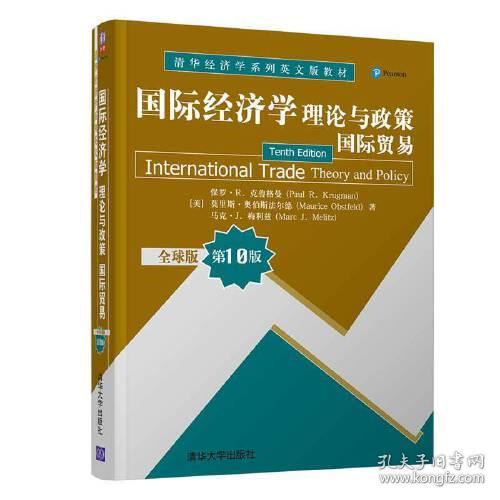


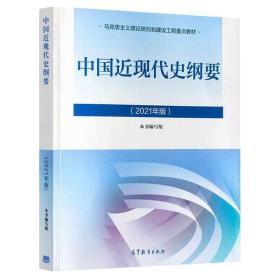
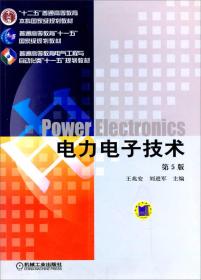


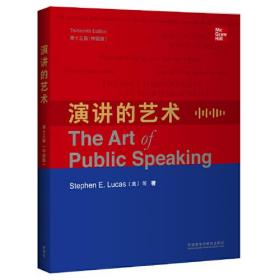


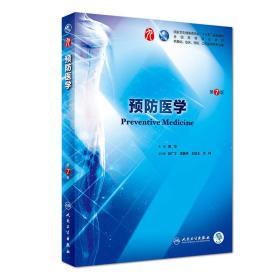

以下为对购买帮助不大的评价